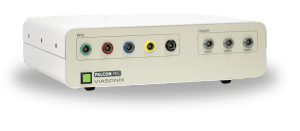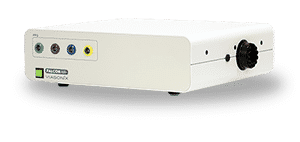In this session, we will discuss frequently asked questions about the Stress test, which is performed in conjunction with the standard Ankle Brachial Index test (ABI).
What is the ABI?
What is the Stress test?
The stress test (or exercise test) is a method to identify vascular disorders when the heart pumps harder and faster. The increased heart activity results in increased oxygen demand to the vasculature, and the increased blood flow helps to identify critical vascular disorders or pathologies.
What is the Difference Between the ABI Test and the Stress Test?
The ABI is a standard vascular screening test to identify vascular disorders in the lower limbs. In contrast, the stress test is a complementary test designed to examine the physiological severity of the vascular disorder.

What Types of Stress Tests are Available?
The most common form of stress testing is a simple exercise, normally walking on a treadmill. In the absence of a treadmill, other means of exercise can be used, such as a stationary bicycle. If neither is available, stress is sometimes generated by asking the patient to tip-toe for a specific period of time. If the patient is unable to exercise at all, sometimes a drug that mimics the effect of exercise may be given to the patient.
Why is the Stress Test Important for ABI Examinations?
ABI Stress test is important because it enhances the sensitivity of the ABI test and can be used to identify atherosclerotic vascular damage.
Pathology such as arterial stenosis or other forms of obstruction along the arterial circulation of the leg will result in a higher pressure drop across the stenosis.
After exercise, the blood flow to the lower limbs increases. Because the pressure drop across the stenosis is a function of the rate of flow, a higher flow rate, such as after exercise, will result in a larger pressure drop and lower ankle pressure. This pressure drop will result, in turn, in a lower ABI index, suggesting the existence of an arterial pathology in the legs.
What is the Difference Between the Stress Test and the Exercise Test?
When is the Stress Test Usually Performed?
The stress test is typically performed when the ABI test shows abnormally low values.
Is the Stress Test Performed Only for Abnormal ABI Values?
No. The ABI Stress test should be performed for patients showing specific clinical symptoms even if their ABI value is normal. The physiological protective mechanisms such as distal vasodilation or the development of collateral pathways protect the legs and maintain appropriate blood flow along the legs and to the feet. However, the Stress Test can help to identify when these protective physiological mechanisms are exhausted and cannot provide further protection to the limb.
How is the Stress Test Performed?
Stress Testing for PAD requires an ABI Machine, such as the Falcon/PRO, pressure cuffs, and a Doppler pencil probe. Alternatively, the test can be performed with other means such as a PPG sensor, but a Doppler measurement is the accepted gold standard for ABI Stress testing.
In a typical Stress Test examination, the resting ABI is measured, followed by ABI measurements after stress.
Normally, stress is induced by requesting the patient to exercise. The most common and controlled method to exercise is by walking on a treadmill per a given exercise protocol.
However, examiners may use alternative exercise options in laboratories that do not have a treadmill on site. These exercise alternatives include asking the patient to tip-toe for a defined length of time or even to walk rapidly for several minutes along the hallways of the hospital.
Another form of artificial stress is achieved by generating reactive hyperemia. This test is done with an occluding pressure cuff over the thigh for several minutes. After the exercise or RH is completed, the ABI is then rapidly measured again to evaluate the post-stress circulation status.
Finally, it is also common to repeat the ABI measurements for up to 10 minutes post-stress or until the ABI value returns to normal resting condition value.
How Long is the Stress Test?
A standard exercise stress test can last 10 to 15 minutes. Additional time is required for post-exercise recovery.
What are the Measurement Cycles During a Stress Test?
The measurement cycles are sequential repeats of the stress test.
Immediately after completing the exercise, the patient lies back on the bed, and the ABI measurements are repeated. The first repeat is considered the first cycle of testing. Additional ABI measurement cycles can be conducted every few minutes to monitor the recovery process until the ABI values return to the pre-stress resting values.
What are the Expected Results of ABI Stress Test?
A large drop (more than 20 mmHg) between the pre-exercise and post-exercise pressures can potentially indicate a Peripheral Arterial Disease. Likewise, a decrease in the value of ABI in pre- and post-stress by more than 0.2 may also indicate PAD.














